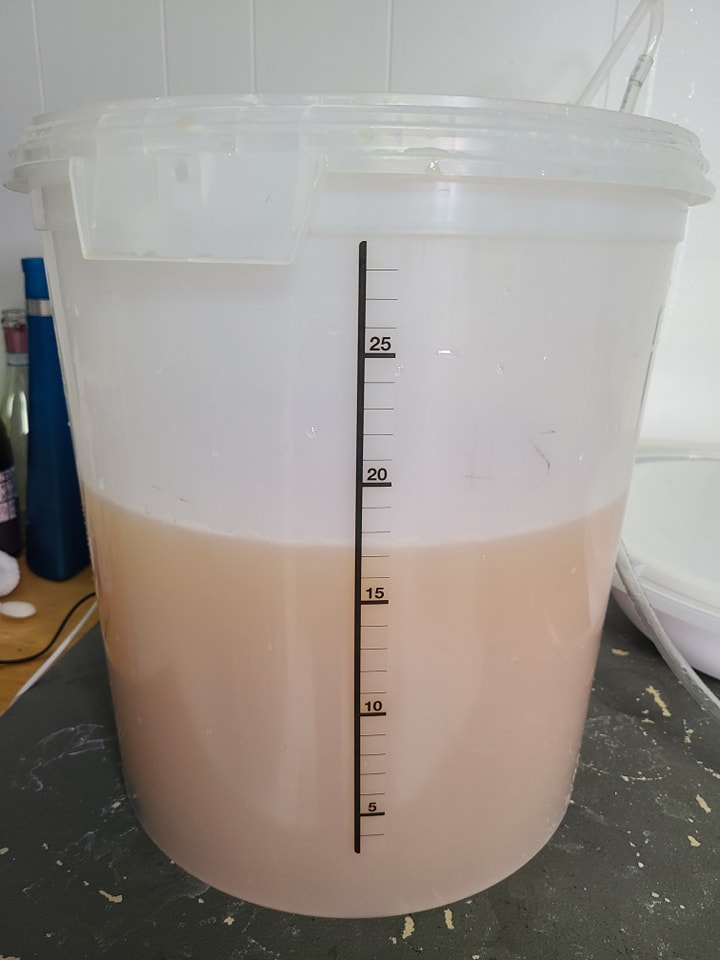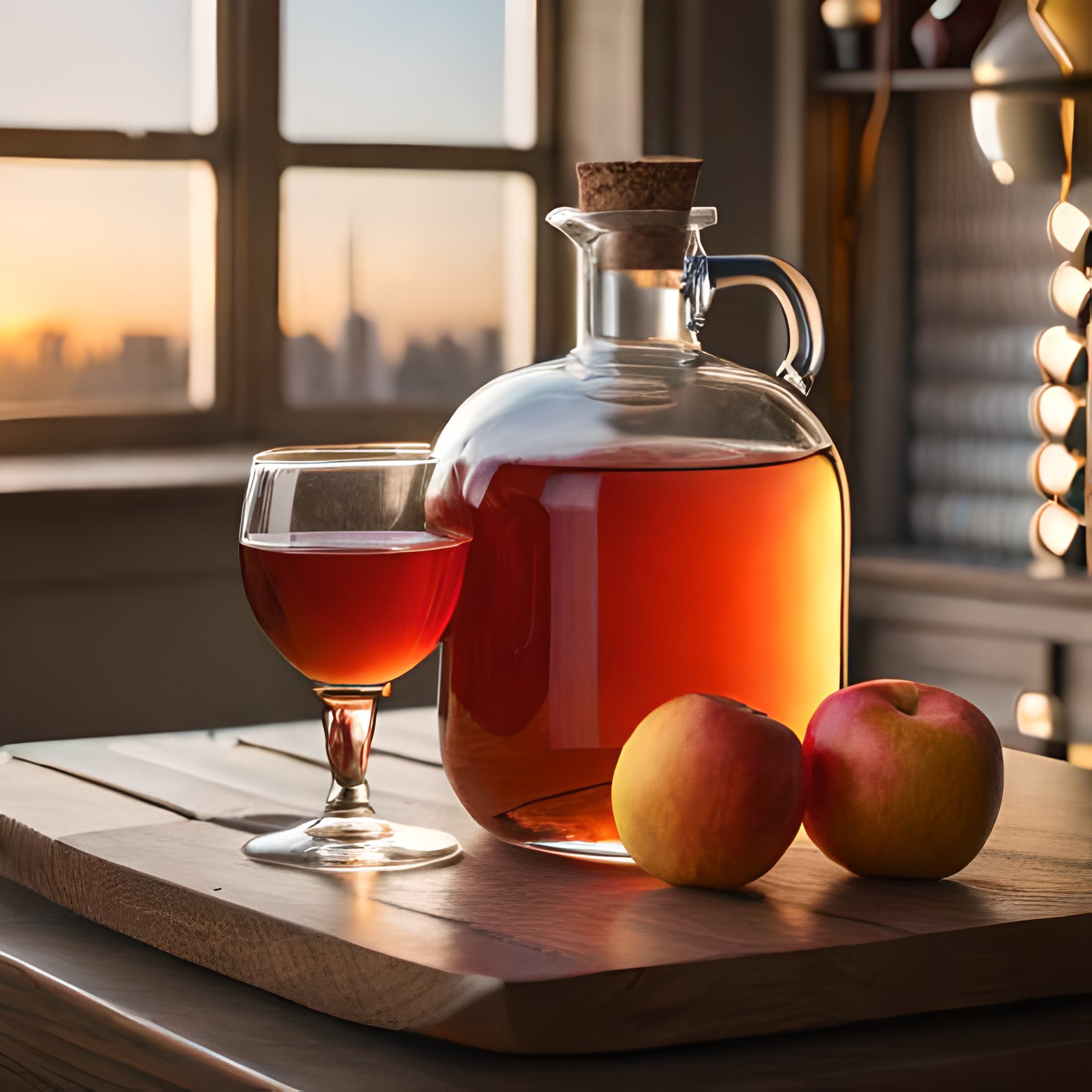
Are you looking for a unique and delicious wine to impress your guests at your next dinner party? Look no further than crabapple wine! This lesser-known variety offers a distinct flavor and aroma that is both sweet and tart, making it a perfect complement to a variety of dishes and desserts.
But crabapple wine isn't just tasty - it's also packed with health benefits. Crabapples are rich in antioxidants, vitamins, and minerals that can boost immunity, reduce inflammation, and improve digestion. Plus, making your own wine at home can be a fun and rewarding hobby that allows you to experiment with different ingredients and flavors.
In this article, we'll delve into the history of crabapple wine, explore its health benefits, and offer a step-by-step guide to making your own batch at home. Whether you're a seasoned winemaker or a curious beginner, this guide will provide you with all the information you need to create a delicious and unique wine that you can be proud of. So, let's raise a glass of crabapple wine!
Preparing the Ingredients

Before you can start making your crabapple wine, you need to gather the necessary ingredients and prepare them properly. Here's what you'll need:
- Crabapples: Look for ripe, flavorful crabapples that are free from blemishes or signs of mold. You'll need about 10-12 pounds of crabapples for every gallon of wine.
- Water: You'll need enough water to cover the crabapples in your primary fermentation vessel.
- Sugar: Most crabapple wine recipes call for adding sugar to the must to increase the alcohol content and balance the tartness of the crabapples. You'll need about 2-3 pounds of sugar for every gallon of wine.
- Yeast: Choose a wine yeast that is suitable for fermenting fruit wines, such as Lalvin K1V-1116 or Red Star Premier Rouge. Alternatively, you can use Premier blanc yeast (Red Star).
- Other flavorings (optional): You can add other flavorings to your wine, such as cinnamon sticks, cloves, or orange zest, to create a more complex flavor profile.
Fermentation preparing for crabapple wine
Once you have all of your ingredients, it's time to prepare them for fermentation. Here's how:
- Wash and sanitize all of your equipment, including your primary fermentation vessel, stirring spoon, and any other utensils you'll be using.
- Wash the crabapples thoroughly and remove any stems or leaves. Cut the crabapples in half to expose the flesh and remove the seeds and core.
- Place the crabapple halves in your primary fermentation vessel and add enough water to cover them. You can also add any other flavorings at this point.
- Using a potato masher or similar tool, crush the crabapples to release their juice. Be careful not to over-mash the fruit, as this can release bitter tannins that will affect the flavor of your wine.
- Add the sugar to the must and stir well to dissolve.
- Sprinkle the yeast on top of the must and stir gently to distribute. Cover the fermentation vessel with a lid or cheesecloth to keep out dust and other contaminants.

Crushing and Fermenting
Now that your crabapple must is prepared, it's time to start the fermentation process. This is where the yeast consumes the sugar in the must and converts it into alcohol, giving your wine its signature flavor and aroma. Here's how to ferment your crabapple wine.
Procedure
- Place your fermentation vessel in a cool, dark place where the temperature is between 60-70°F (15-21°C). This will help the yeast to ferment the wine slowly and steadily, without producing any off-flavors or aromas.
- Check on your wine daily and stir the must gently with a sanitized spoon. This will help to aerate the wine and distribute the yeast evenly throughout the must.
- After 2-3 days, you should start to see signs of fermentation, such as bubbles forming on the surface of the must. Continue to stir the wine daily and monitor its progress.
- After about a week, the fermentation should slow down and the bubbles should become less frequent. At this point, you can remove any solids or sediment from the must using a sanitized strainer or cheesecloth.
- Transfer the wine to a secondary fermentation vessel, such as a glass carboy or plastic bucket. This will help to clarify the wine and reduce the risk of contamination.
- Attach an airlock to the secondary fermentation vessel to allow gas to escape while preventing oxygen from entering the wine. This will help to prevent off-flavors and spoilage.
- Allow the wine to ferment for 2-3 weeks, or until the specific gravity of the wine has stabilized. You can check the specific gravity using a hydrometer, which will give you an idea of the alcohol content of the wine.
- Once the fermentation is complete, you can bottle your crabapple wine and age it for several months to allow the flavors to develop. Alternatively, you can enjoy your wine right away if you prefer a fresher, fruitier flavor.
Pressing and Racking the Crabapple Wine
After the fermentation is complete, it's time to transfer your crabapple wine to a new vessel and clarify it. This process is known as racking, and it involves removing the wine from any sediment or solids that have settled to the bottom of the fermentation vessel. Here's how to rack your crabapple wine:
- Use a sanitized siphon hose to carefully transfer the wine from the secondary fermentation vessel to a clean, sanitized carboy or another storage vessel. Be careful not to disturb any sediment that has settled on the bottom of the vessel.
- Once the wine is transferred, you can add any additional flavorings or adjust the sweetness if needed. This is also a good time to take a sample of the wine and taste it to see if any adjustments are needed.
- Allow the wine to sit for several days to allow any remaining sediment to settle to the bottom of the vessel. You can also use fining agents, such as bentonite or isinglass, to help clarify the wine and remove any haze.
- Once the wine has clarified, it's time to bottle it. Use a sanitized siphon hose to transfer the wine to clean, sanitized bottles, leaving about 1 inch of headspace at the top of each bottle.
- Cork or cap the bottles and store them in a cool, dark place for several months to allow the flavors to develop. Alternatively, you can enjoy your wine right away if you prefer a fresher, fruitier flavor.
Tip for extracting more juice
If you want to extract as much juice as possible from your crabapples, you can use a fruit press to crush and strain the fruit before fermentation. Here's how to press your crabapples:
- After you have washed and sanitized your crabapples, use a fruit press to crush the fruit and extract the juice. You can also use a potato masher or similar tool to crush the fruit if you don't have a fruit press.
- Transfer the juice to your primary fermentation vessel and add the sugar and yeast as usual.
- Ferment the wine as described in the previous section, and rack the wine once the fermentation is complete.
By pressing your crabapples before fermentation, you can extract more juice and create a more concentrated, flavorful wine.

Crabapple Wine: Troubleshooting
While making crabapple wine can be a fun and rewarding experience, sometimes things don't go as planned. Here are some common issues that you may encounter when making crabapple wine, and how to troubleshoot them:
- Slow or stalled fermentation: If your fermentation is taking longer than expected or has stopped completely, it may be due to a lack of nutrients or oxygen for the yeast. Try stirring the must to aerate it and adding yeast nutrients to encourage fermentation.
- Off-flavors or aromas: If your wine has a sour or unpleasant smell, it may be due to contamination from bacteria or wild yeast. Try adding sulfites or other preservatives to the wine to kill off any harmful microorganisms.
- Cloudy wine: If your wine is hazy or cloudy, it may be due to suspended particles or sediment in the wine. Try using fining agents or a filtering system to clarify the wine and remove any haze.
- Low alcohol content: If your wine has a low alcohol content, it may be due to a lack of sugar in the must or sluggish fermentation. Try adding more sugar to the must or using a more active yeast strain to boost fermentation.
- Too sweet or too dry: If your wine is too sweet or too dry for your taste, you can adjust the sweetness by adding more sugar or by adding water to dilute the wine. You can also adjust the acidity of the wine by adding tartaric acid or another acid blend.
- Cork taint: If your wine has a musty or moldy smell, it may be due to cork taint, which is caused by a chemical compound called TCA. Try using a different type of cork or sealing the bottles with screw caps to prevent cork taint.
Remember, making wine is a learning process, and it may take several batches to perfect your technique. If you encounter any issues while making crabapple wine, don't be afraid to experiment and try new things. With patience and perseverance, you can create a delicious and unique batch of homemade wine.
Serving and Pairing the Crabapple Wine

Once your crabapple wine has finished aging and clarifying, it's time to enjoy the fruits of your labor. Here are some tips for serving and pairing your homemade crabapple wine:
- Serving temperature: Crabapple wine is best served chilled, at around 45-50 degrees Fahrenheit. You can refrigerate the bottle for a few hours before serving, or you can place it in an ice bucket for a quicker chill.
- Glassware: Use clear, tulip-shaped glass to showcase the color and aromas of your wine. The shape of the glass will also help to concentrate the aromas and flavors.
- Pairing with food: Crabapple wine pairs well with a variety of foods, including poultry, pork, and seafood dishes. It also pairs well with cheeses such as cheddar, gouda, and brie.
- Dessert pairing: Crabapple wine can be a great accompaniment to fruit-based desserts such as apple pie, peach cobbler, or a fruit tart.
- Tasting notes: Crabapple wine typically has a crisp, tart flavor with hints of apple and citrus. It can also have a floral aroma with notes of honey and spice.
Remember, taste is subjective, so feel free to experiment with different food and wine pairings to find your perfect match. And don't forget to savor each sip of your homemade crab apple wine, knowing that you put time and effort into creating a delicious and unique beverage.
Conclusion
Crabapple wine is a unique and delicious beverage that can be made right at home. With its tart and crisp flavor, floral aroma, and health benefits, crabapple wine is a great alternative to traditional grape wine.
Making crabapple wine is a fun and rewarding process that can be enjoyed by anyone, regardless of their level of winemaking experience. With a few simple ingredients and a bit of patience, you can create a delicious and unique batch of homemade wine.
Whether you're looking to impress your friends and family with your winemaking skills, or simply looking for a new hobby, making crabapple wine is a great way to explore your creativity and connect with nature. So why not give it a try? Who knows, you may just discover your new favorite beverage.
FAQs for Crabbaple Winemaking
Q: Can I use any type of crabapples to make wine?
A: While there are many types of crabapples, some are better suited for winemaking than others. Look for crabapples that are high in acid and sugar content, as these will produce better-quality wine.
Q: Can I prepare a crab apple wine recipe 5 gallons at home?
A: Yes, you can prepare a crab apple wine recipe for 5 gallons at home by scaling up the recipe accordingly. Just make sure you have a container large enough to hold the volume of wine.
Q: How long does the winemaking process take?
A: The winemaking process can take several weeks to several months, depending on factors such as fermentation time and aging.
Q: Do I need any special equipment to make crabapple wine?
A: While some specialized equipment can be helpful, such as a wine press, it is possible to make crabapple wine with just basic kitchen tools such as a pot and a strainer.
Q: How long can I store homemade crabapple wine?
A: Homemade crabapple wine can be stored for several years if stored properly in a cool, dark place.
Q: Can I drink crabapple wine if I am allergic to apples?
A: If you have a known allergy to apples, it is best to avoid drinking crabapple wine, as it may cause an allergic reaction.
Q: Can I use crabapple wine in cooking?
A: Yes, crabapple wine can be used in cooking to add flavor to sauces, marinades, and desserts.
Q: Can I carbonate crabapple wine?
A: Yes, crabapple wine can be carbonated using a soda siphon or other carbonation equipment. However, carbonation can be tricky and requires careful attention to avoid over-carbonation or under-carbonation.
Q: Is crabapple wine similar to grape wine?
A: While crabapple wine shares some similarities with grape wine, such as alcohol content, the flavor profile and aroma of crabapple wine are distinct and unique.
Q: Can I mix crabapple wine with other fruits?
A: Yes, you can mix crabapple wine with other fruits such as pears, plums, or raspberries to create a unique flavor blend.
Final note: Some people use to search for "crab apple wine recipe", which is the same concept as described here in this post.
Banana Wine: The Tropical Beverage Revolutionizing the Wine World
The Ultimate Guide to Japanese Plum Wine: Discovering Umeshu

Blueberry Wine: A DIY Guide for Delicious Summer Drinks!

The Ultimate Sunflower Wine Recipe with Petals: A Delightful Floral Elixir

The Ultimate Guide to Mulberry Wine Recipes

Rhubarb Wine Recipe: A Homemade Wine to Surprise

Wine from Pomegranate: The Ruby-red Elixir

Strawberry Rhubarb Wine: A Review

Making Zinfandel Wine: Recipe and Cooking Ideas You Will Love!





 Based on 2 Review(s)
Based on 2 Review(s)
